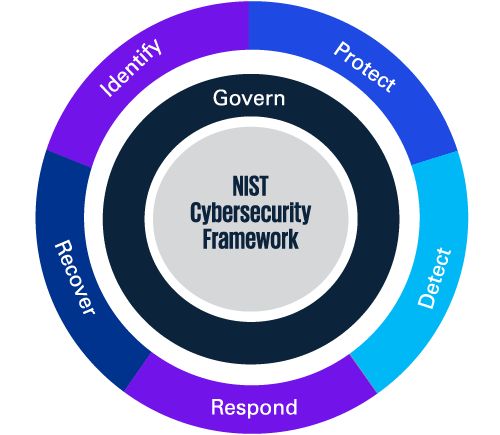Onur Özdemir
Partner
���㣨Leyu���������� in Luxembourg
In an era where cyber threats are growing more sophisticated and persistent, organizations need a flexible and practical approach to manage their cybersecurity risks. That’s where NIST CSF 2.0 �� the National Institute of Standards and Technology Cybersecurity Framework 2.0 �� comes in.
Released in February 2024, CSF 2.0 marks a significant evolution from its 2014 predecessor. Originally designed for critical infrastructure, the framework now broadens its scope to support all organizations –public or private, large or small �� seeking to strengthen their cybersecurity posture.
In the European landscape, NIST CSF 2.0 seamlessly integrates the requirements of DORA, positioning itself as an open standard to ensure compliance. While DORA imposes specific demands on operational resilience within the financial services sector, NIST CSF 2.0 provides a flexible and adaptive framework, enabling organizations to not only meet these regulatory requirements but also continuously evolve their cybersecurity strategies and management maturity. This comprehensive approach offers a helicopter view of an organization’s overall cybersecurity posture, ensuring alignment between cybersecurity practices and overarching business objectives.
During the NIST assessment, management uses the maturity level to set clear targets, with a roadmap from ���㣨Leyu���������� guiding the organization toward its goals. CSF 2.0 introduces an updated "Govern" function, focusing on leadership and risk oversight, while maintaining the core functions of Identify, Protect, Detect, Respond, and Recover to improve cybersecurity practices. Whether you’re building a security program from the ground up or refining an existing one, CSF 2.0 provides a clear, strategic path forward in today’s evolving digital landscape.
The National Institute of Standards and Technology (NIST) Cybersecurity Framework (CSF) is recognized globally as a key standard for organizations across different industries and government sectors in managing and reducing cybersecurity risks. With the release of NIST CSF 2.0, organizations can now better assess their cybersecurity maturity, identify areas for improvement, and implement enhanced processes and controls to reach higher maturity levels. Importantly, many local and sector-specific regulatory authorities refer to or align with NIST CSF, using it as a foundational guide for effective cyber risk management. This broad adoption reinforces its standing as a versatile, trusted framework for cybersecurity worldwide.

The NIST Cyber Security Framework (NIST CSF) is a capability framework developed by the US Government. The NIST CSF provvides a common language to understand, manage and express cyber risks both internally and externally. It can be used to help identify and prioritise actions for reducing cyber security risks and provides a tool for aligning policy, business and technological approaches to manage cyber risk.
Adopting NIST CSF 2.0 offers significant benefits, especially in providing strong support for management. It enables leadership to make informed, strategic decisions while ensuring cybersecurity resilience and compliance with global regulations.
Alignment with Other Regulations
NIST CSF 2.0 serves as a common language that can be easily mapped to various global and local cybersecurity regulations. This makes it a reliable reference framework for meeting mandatory regulatory requirements.
Strengthened Cybersecurity Resilience
NIST CSF 2.0 enables organizations to better prepare for, respond to, and recover from cyber incidents. It fosters a risk-informed culture through a proactive and systematic cybersecurity approach.
Supports Continuous Improvement
NIST CSF 2.0 encourages organizations to regularly assess and refine their cybersecurity posture. This ensures they stay agile and adaptive in a rapidly evolving threat landscape.
The 4-phased NIST Cybersecurity Risk and Maturity Assessment approach follows a logical sequence to ensure that findings are validated throughout the process and feedback is gathered on an iterative basis. This approach not only ensures alignment with the framework but also actively engages stakeholders at each phase, with a SWOT analysis incorporated to assess the organization's cybersecurity strengths, weaknesses, opportunities, and threats, further enhancing the assessment and improvement strategy.

Additionally, ���㣨Leyu���������� may incorporate the CMMI Maturity Scoring Approach to assess maturity levels across the NIST 2.0 domains. This approach �� standing for Capability Maturity Model Integration, developed by the CMMI Institute �� facilitates a thorough evaluation of the organization's cybersecurity maturity within each domain. The resulting Cyber Maturity Score offers a comprehensive overview, highlighting areas for further enhancement and pinpointing specific domains requiring improvement to bolster the organization’s overall cybersecurity posture.

From cybersecurity risk assessments to ICT governance model definition, ���㣨Leyu����������’s Tech & Cyber Risk Consulting specialists have long supported financial institutions in identifying and addressing key gaps by defining roadmaps with both tactical and strategic action plans. Our team has conducted numerous audit and advisory engagements aligned with NIST CSF 2.0, helping clients enhance their cybersecurity maturity and operational resilience. In addition, our professionals hold globally recognized certifications such as CISSP, CISM, CRISC, CISA, ITIL, and ISO/IEC 27001, ensuring deep expertise and trusted guidance in every engagement.
This article was written in collaboration with Imran Abdullayev, Senior IT auditor and consultant at ���㣨Leyu���������� Luxembourg.

